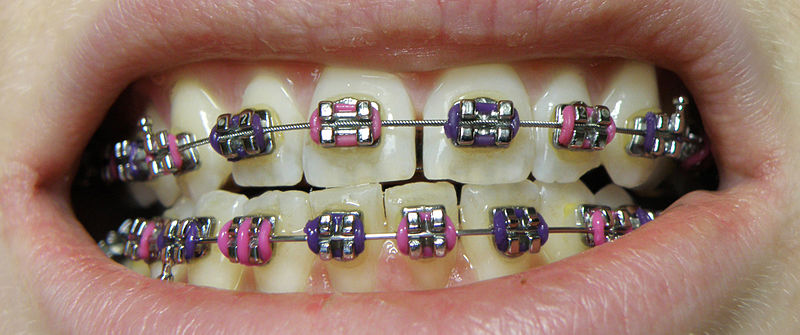Comprehensive Overview to Orthodontics Procedures for Correcting Oral Imbalances
In the realm of orthodontics, the journey to achieving a completely aligned smile includes a myriad of procedures customized to fix oral imbalances. From conventional dental braces to undetectable aligners and even surgical choices, the field of orthodontics provides a variety of services to resolve varying degrees of oral abnormalities. Recognizing the ins and outs of each procedure, including their systems, benefits, and possible downsides, is important in making informed decisions about one's orthodontic therapy. As we browse through the thorough guide to orthodontic procedures for remedying oral misalignments, the detailed information of each method will certainly unfold, losing light on the course towards a practical and harmonious oral positioning.
Orthodontic Procedures Review

Regular changes and tracking are essential components of orthodontic therapy to make sure development is on track and to make any necessary modifications along the method. By undertaking orthodontic procedures, patients can not just achieve a straighter grin yet also enhance their total oral wellness and feature.
Standard Braces: How They Work
When taking into consideration orthodontic treatments for oral imbalances, traditional dental braces stand out as a time-tested method for fixing teeth placing. Conventional dental braces contain brackets, wires, and bands that function with each other to apply constant stress on the teeth, slowly relocating them right into the wanted positioning. The brackets are affixed to the teeth utilizing a special adhesive, and the cables are threaded via the braces. By adjusting the tension of the cables, orthodontists can manage the direction and pressure put on each tooth, guiding them into proper positioning gradually.
As stress is applied to the teeth via the braces, the bone bordering the teeth is improved to support the brand-new tooth positions. People will certainly need regular adjustments at the orthodontist's workplace to make certain the braces proceed to apply the correct pressure for efficient teeth motion.
Invisible Aligners: Advantages And Disadvantages
These clear, customized trays are practically unseen when used, making them an attractive option for individuals seeking a more aesthetically pleasing orthodontic treatment. Patients can eliminate the aligners before consuming or cleaning their teeth, reducing the danger of food obtaining stuck in the appliance and streamlining the cleansing process.

Surgical Orthodontic Options
Surgical interventions in orthodontics present viable options for addressing intricate dental imbalances that might not be efficiently dealt with with standard orthodontic therapies. While unseen aligners and conventional braces can remedy numerous orthodontic problems, certain instances call for medical treatment to attain optimum outcomes. Surgical orthodontic choices are generally suggested for serious malocclusions, substantial jaw disparities, and situations where the underlying bone structure requires modification to attain proper alignment.
One typical medical orthodontic treatment is orthognathic surgical treatment, which includes rearranging the jaws to fix functional concerns such as trouble speaking or chewing. This surgical procedure is typically carried out in cooperation with an orthodontist that assists straighten the teeth prior to and after the procedure. Surgical orthodontics may likewise entail procedures to reveal influenced teeth, remove excess periodontal tissue, or reshape the jawbone to produce a more harmonious face profile.
Prior to taking into consideration medical orthodontic alternatives, patients go through a thorough evaluation to identify the requirement and prospective advantages of such treatments. aligners. While surgery might seem complicated, it can dramatically boost both the feature and click here now visual appeals of the smile in cases where conventional orthodontic therapies fail
Retainers and Post-Treatment Treatment

Post-treatment treatment involves complying with the orthodontist's instructions faithfully. This might consist of appropriate dental health practices, going to follow-up appointments, and wearing the retainers as prescribed. Failure to abide with post-treatment care directions can cause relapse, where the teeth gradually relocate back towards their initial placements. Regular retainer wear, good oral hygiene, and routine oral check-ups are necessary for maintaining the results achieved with orthodontic surgical procedure and ensuring the long-term stability of the fixed dental positioning.
Verdict
In conclusion, orthodontic procedures offer different choices for remedying dental misalignments. Traditional braces use metal brackets and wires to shift teeth right into appropriate positioning. Unnoticeable aligners offer a more very discreet alternative yet might not appropriate for all instances. Surgical orthodontic choices are available for a lot more extreme imbalances. Retainers are typically used post-treatment to preserve the new positioning. In general, orthodontic procedures can properly improve dental health and wellness and visual appearance.
As we navigate via the detailed guide to orthodontic procedures for dealing with dental imbalances, the complex details of each technique will certainly unravel, shedding light on the course toward a harmonious and practical oral positioning. - cumming orthodontist
One of the most common orthodontic therapies is the use of dental braces, which consist of steel braces and wires that use mild stress to gradually move teeth right into the desired setting.When considering orthodontic treatments for dental imbalances, traditional braces stand out as a tried and true technique for dealing with teeth placing. Additionally, undetectable aligners may not be ideal for complex orthodontic problems that need even more significant teeth motion, as they are typically recommended for moderate to modest cases. Retainers are tailor-made orthodontic tools made to hold teeth in their dealt with positions after the conclusion of orthodontic therapy.